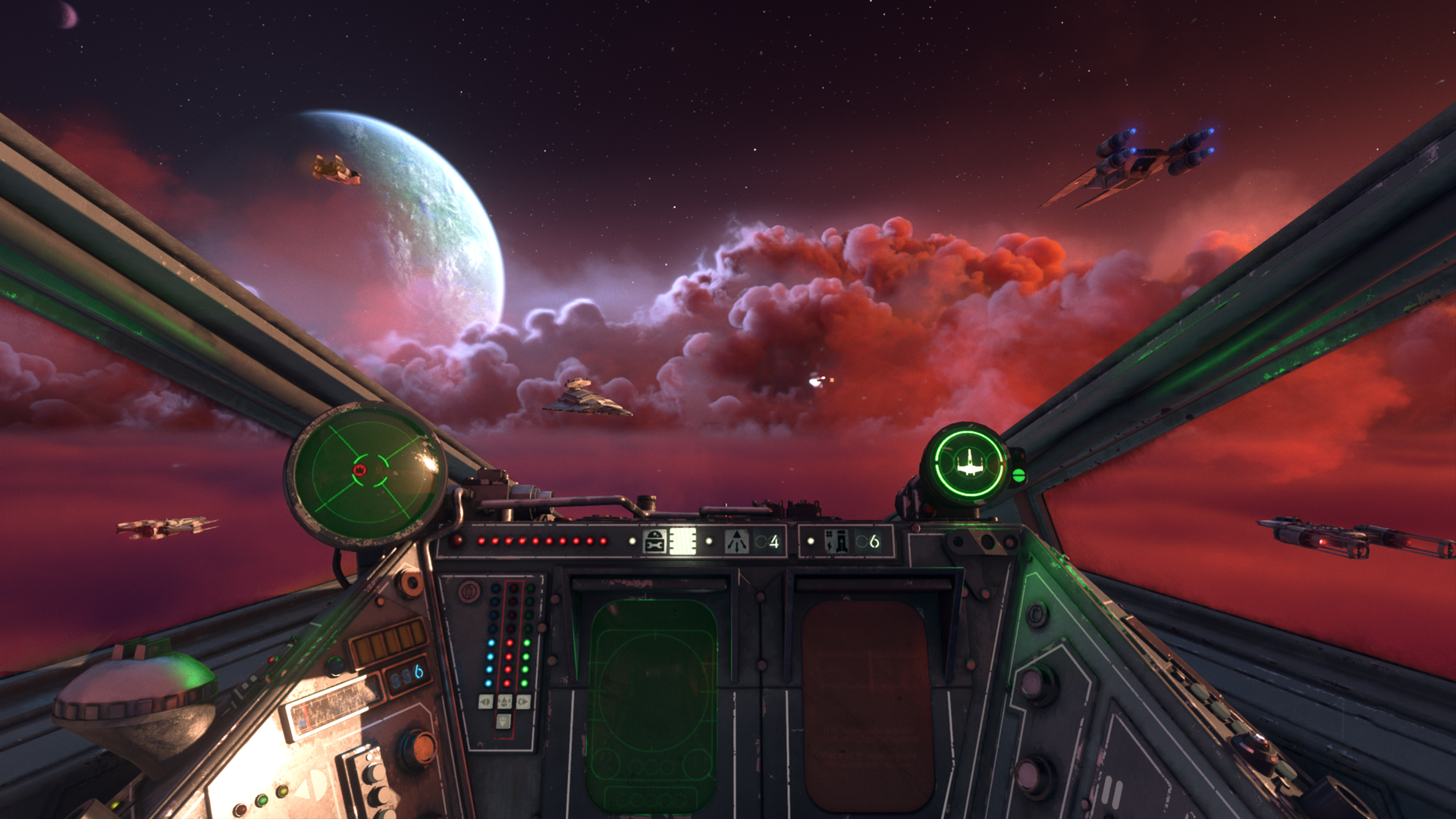GamesRadar+ Verdict
Star Wars: Squadrons offers an exhilarating take on dogfighting in a galaxy far, far away, which helps elevate a functional single-player story and provides a strong foundation for a focused multiplayer experience.
Pros
- +
Complex Starfighters are a rewarding challenge
- +
Strategic depth in multiplayer
- +
VR provides genuine magic moments
Cons
- -
Story beats don't quite land
- -
Missions can feel like large scale tutorials
Why you can trust GamesRadar+
Star Wars: Squadrons almost seems like a reaction to an entire generation of Star Wars games. Slick spectacle has been the calling card of EA's time on the series, which has meant that games such as Battlefront looked the part, even when they sometimes didn't feel it. This first-person dogfighting simulator, on the other hand, wants you to live it. As you plonk yourself into the seat of an X-Wing or TIE Fighter, every detail and decision is designed to immerse you in the cockpit of a starfighter, to turn idle daydreams of whooshing through a galaxy far, far away into a tangible experience.
That it succeeds regularly in conjuring up moments of supreme wish-fulfilment is a testament to the approach developer Motive has taken. Giving you eight different ships, split evenly between the New Republic and Empire, there's a level of complexity that comes with piloting, with granular details you might expect to see in Elite: Dangerous rather than a Star Wars game. Whether it's directing power to a craft's laser or shield system, setting the throttle to half-speed to make your ship more manoeuvrable, or learning how to drift through space so you can do a quick 180-degree turn and surprise other attackers, there's a level of depth to the fantasy of flying an X-Wing in Star Wars: Squadrons that you might not expect.
X-Wing marks the spot
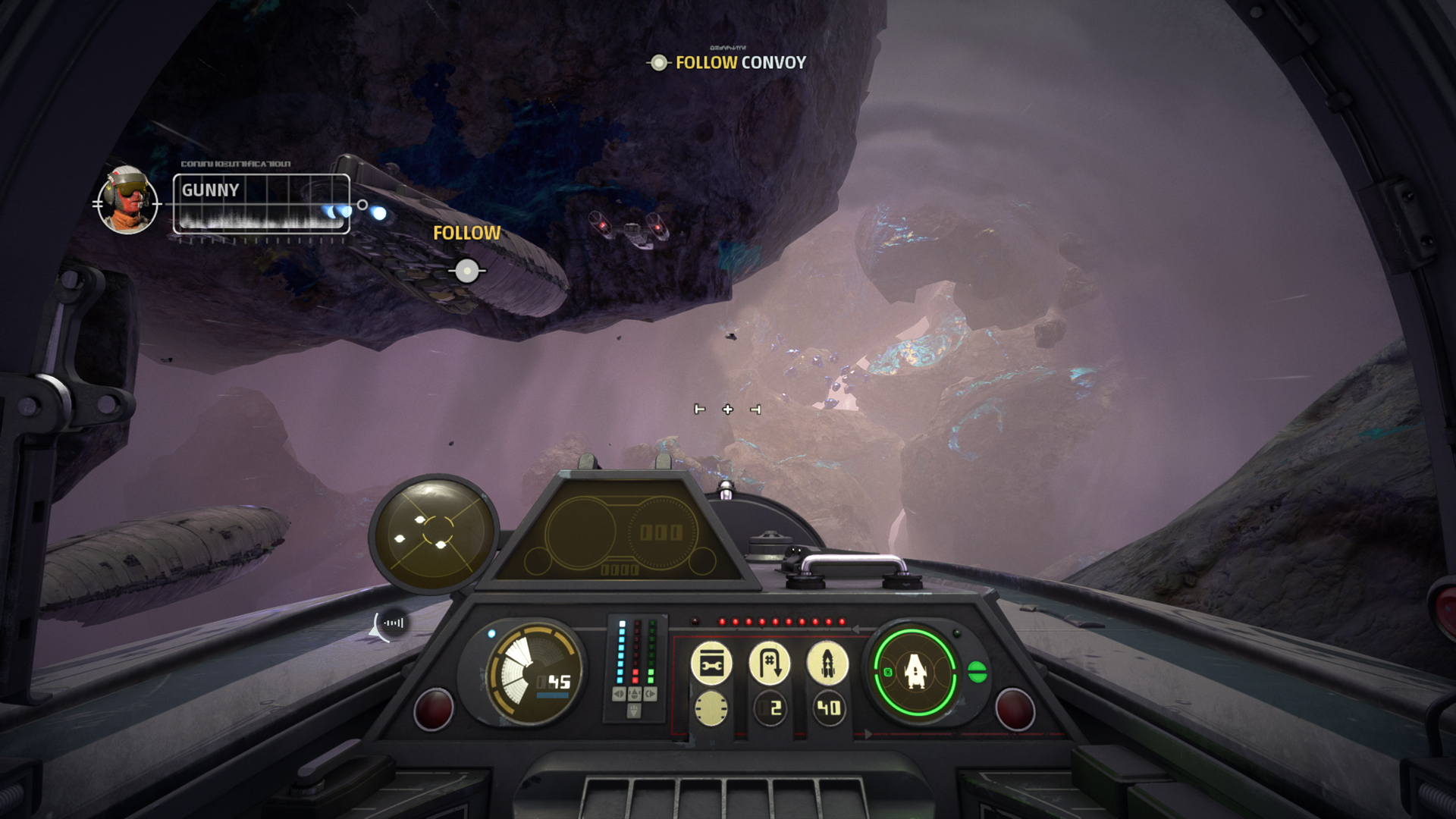
However, this level of detail comes with the trade-off that your first few flights are bound to be spent learning just how to read your cockpit. Power gauges are a small strip of LED lights on your left, your ship's shields and health on a screen to the right, your ammo supply a small box just underneath the windshield… is it a windshield in space? Anyway, you know what I mean. My larger point is that Star Wars: Squadrons wants you to learn how to fly, and while that can seem initially daunting at first, especially if you're expecting something similar to what EA has delivered in recent years, but sticking with it makes every threading-the-needle manoeuvre or game of chicken with an enemy fighter all the more rewarding.
That sensation is only improved when you slip on a VR headset. Squadrons is fully playable in PC VR or PS VR (I played it on the latter), and it simply ramps up the excitement and immersion of being in a cockpit. While it's a bit lame to say I audibly gasped as I flew through the wreckage of an enemy X-Wing, it is one of those moments where I briefly forgot I was sitting in my living room. While it might be fully playable in VR, I found that it works best for the single-player missions. The small benefits, such as being able to crank your head around to see where an enemy has flown off to, helps sell you on the fantasy, but comes at the cost of not being able to pay too much attention to your ship's controls. As you can imagine, this is not something you can really afford in online multiplayer. The game I tried in VR made me feel like a learner driver, darting my eyes from the scene ahead of me to the control panel below my eye line just a little too much for comfort.
Of course, none of that matters if it feels like every ship you control is the same, and Motive has done an excellent job of not only creating distinct crafts, but letting you put your own spin on them. Classics like the X-Wing, A-Wing, and TIE Fighter all offer noticeable differences, and these can be enhanced with different components you can acquire for ships. I'm particularly fond of a rotary cannon that has a short wind-up time, but deals an exceptional amount of damage if an enemy makes the mistake of crossing it. Other upgrades, which you unlock with a purely in-game currency called Requisition, can allow you to trade health and shields for mobility, and there's plenty of scope for experimentation in determining what you want each ship to fly like.
Flying Solo
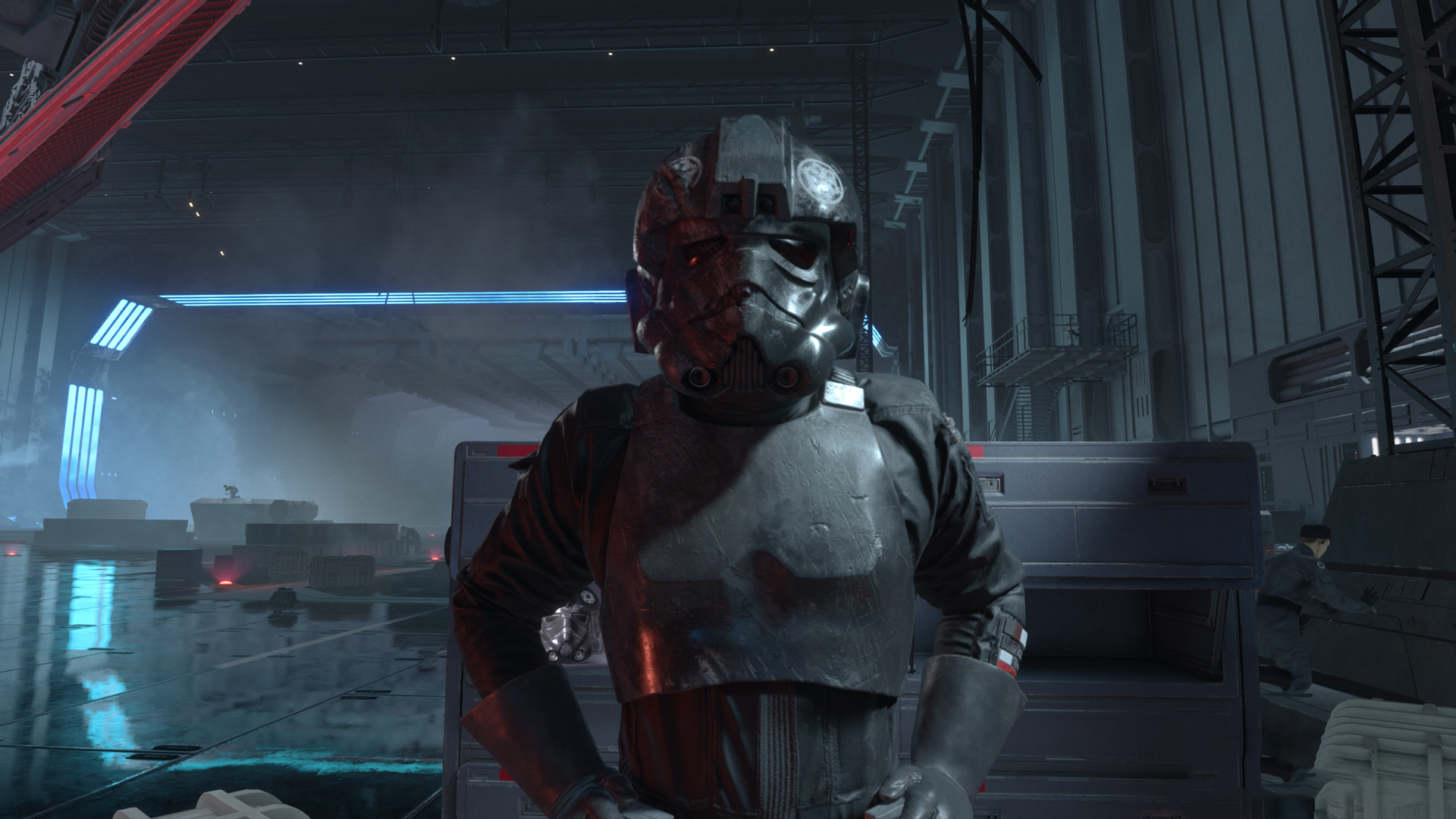
So, yes, the flying is the strongest part of the experience, as you would hope for. Sadly, the game's structure doesn't quite match its core strength. Let's start where you'll have to when booting up the game, with the single-player story. A prologue mission, that also acts as a covering-the-basics tutorial, sets the table for a tale where you play as two custom characters on either side of the ongoing galactic war. Taking place after Return of the Jedi's Battle of Endor, the Empire is licking wounds, while the New Republic is figuring out how to make the transition from rebels to leaders. At the centre of this are two warring commanders, the Republic's Lindon Javes and the Empire's Terisa Kerrill, whose personal history drives the action.
It's a simple story, functionally told and elevated by the Squadrons you fly with. On either side of the battle, you're part of a five-person unit, and Motive's best decision is to give you downtime with each character away from the action. These little conversations colour in each backstory, revealing why they fly for the (cough former) Rebels or Empire. For instance, one stand-out is Shen, a pilot for the Empire who by their own admission is more machine than human at this point. He refuses to take off his partially burnt helmet and as the story trundles on, he slowly reveals more and more about his dedication to the cause. While there's never particularly revelatory in them, these little vignettes with each character gives them a personality that makes flying with them more engaging.
Despite the strong characters and intriguing premise, it can sometimes feel like stage dressing for expanded tutorials for the game's multiplayer modes. This is compounded by mission design that feels just a little too transparent in its attempt to teach you the game's more subtle concepts. One moment in an early level sees a particularly sudden break in action where one character coaches you to drift, before you fly off for more dogfights. While later missions have some fun set-pieces, such as setting up a minefield trap in a sea of floating debris, it serves its purpose as an introduction to the game's concepts rather than a story in its own right.
Multiplayer Mauls
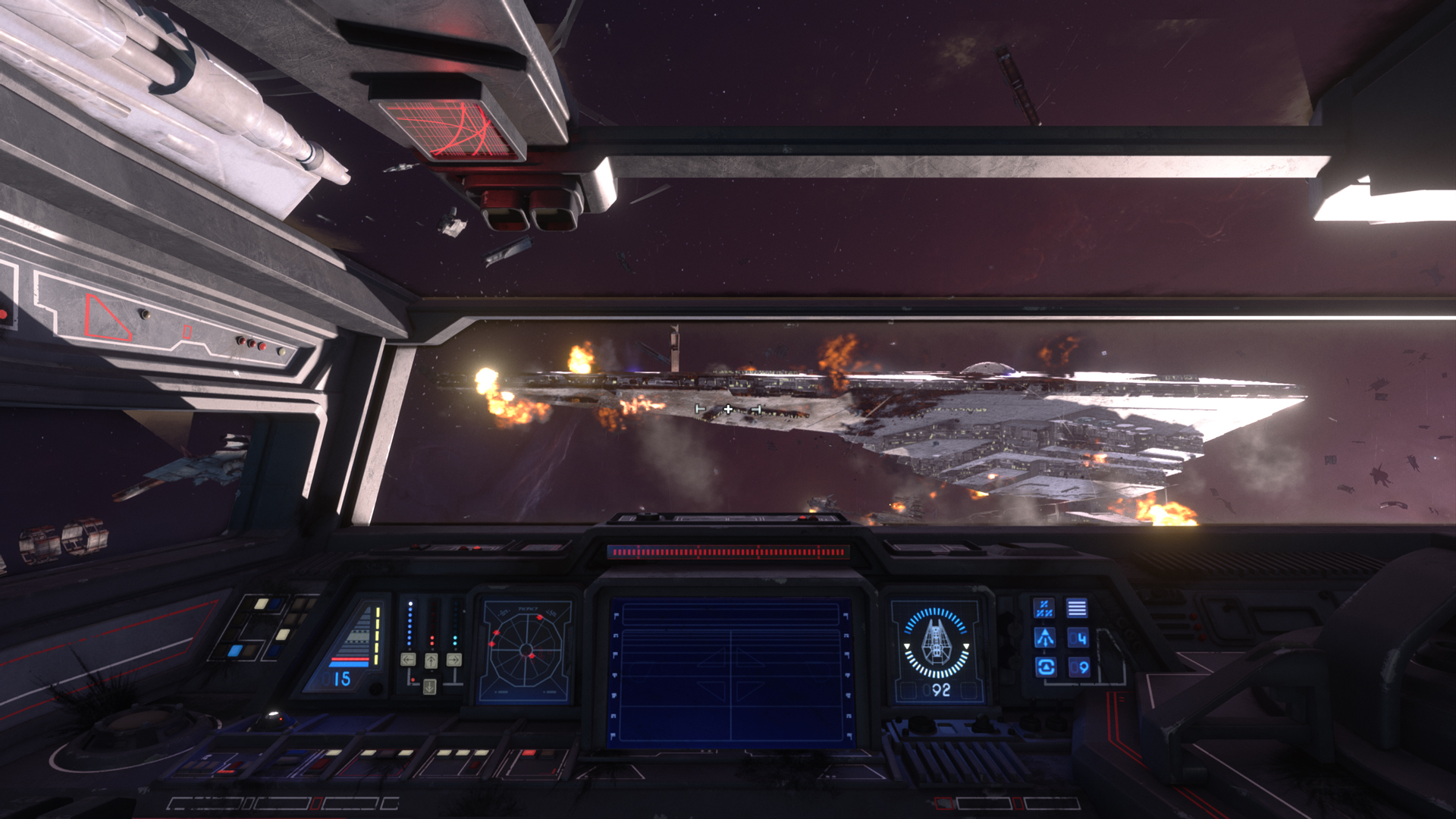
So what is on offer in multiplayer? There are two modes, Dogfight and Fleet Battles, which both offer a strategic and exhilarating blast of action. Dogfight is simply a team deathmatch, as two squads of 5 aim to be the first to get 30 kills. While it might initially seem like the New Republic has an unfair advantage - their ships tend to have shields, whereas Imperials don't - this mode allows you to quickly find a playstyle that suits, whether that's finding an armoured build that lets you deal lots of damage, to being quick and nimble and getting the better of your enemies by staying out of their sights. Basically, despite having a lot of power in my shields, I got battered by some agile TIE fighters.
However, all roads lead to Fleet Battles. This is the game's signature mode and the one that offers the most amount of strategic thinking. At its heart, this is a game of Tug of War, as teams fight to wrestle momentum and earn a chance to attack an opposition's Capital Ship. Taking out players will earn your side Morale, and if you fill that bar, your team will push the frontline of the battle. Games inevitably end with a scramble as your squad attempts to take on an MC-75 or a Star Destroyer, powerfully ships that will pulverise you should you just attempt to fly straight at them. Watching a Star Destroyer slowly turn from juggernaut to smoking wreck is an immense pleasure, especially when you're the one screeching along the hull, dropping as many Proton bombs as you can.
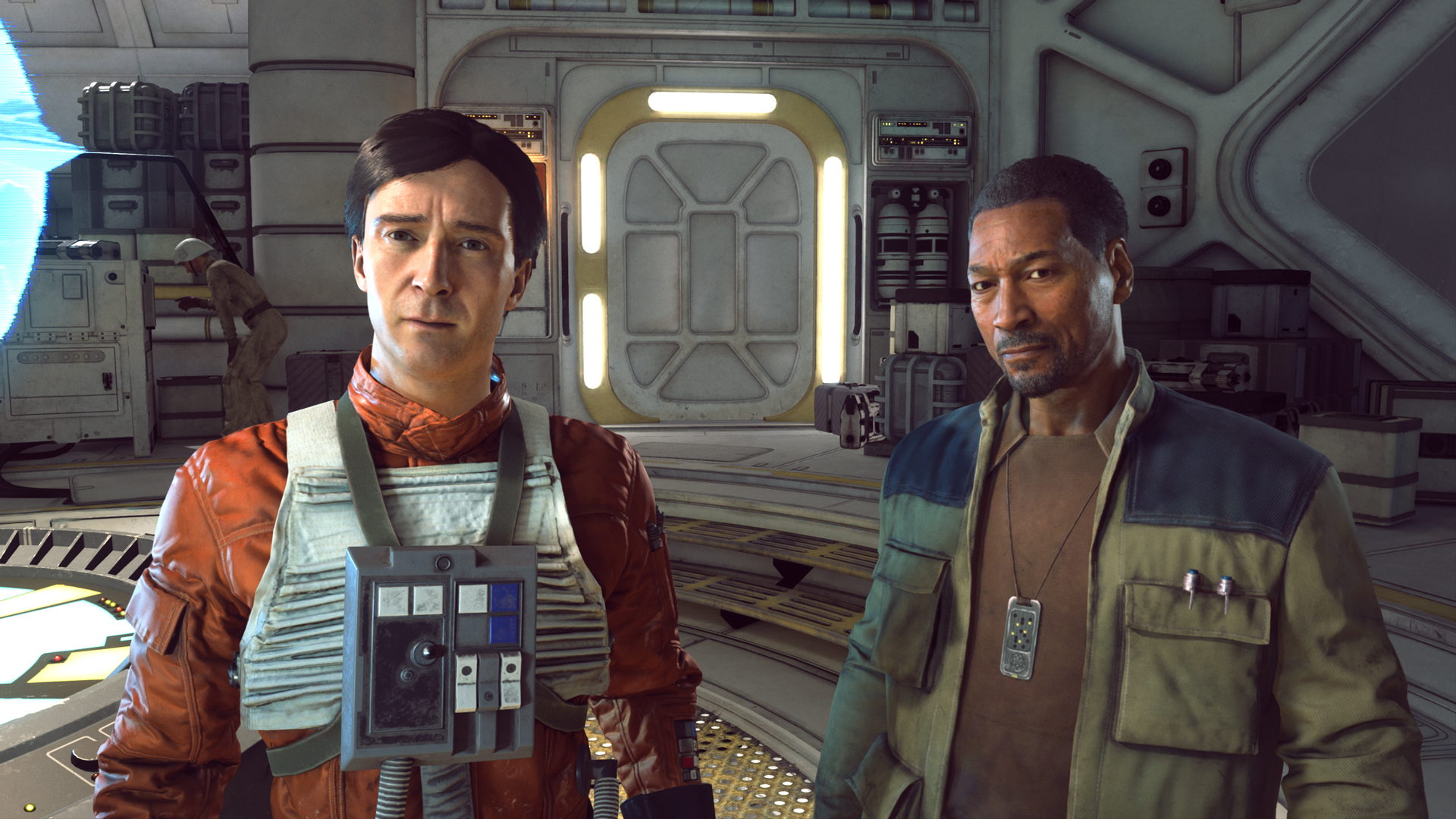
Fleet Battles are long games, usually weighing in at around 30 mins or so, and despite their complexity, are tremendous fun even if you're not an ace pilot. You can focus on healing squadmates with the Support class ships or dealing damage by hopping in a bomber and focusing on AI Capital Ships rather than other players. The scope for strategy is immediately apparent and it's clear that this mode is designed for constant communication, so might not necessarily appeal to players who just want to dip in for a quick couple of rounds of no-frills flying. Still, I can't wait to see what sort of community grows around it, especially once players have time to discover different plans that don't involve heading straight into the fight.
Plus, in a seeming reaction against the launch of Battlefront II, everything in Star Wars: Squadrons can only be unlocked through two in-game currencies. There are no microtransactions and you can unlock anything you see in the menus purely from playing the game. It's clear that a large part of the game's multiplayer tail will be focused on earning new ship parts or cosmetics for your character and craft. It's an old-school approach, but one the community will undoubtedly appreciate.
TIE it all together
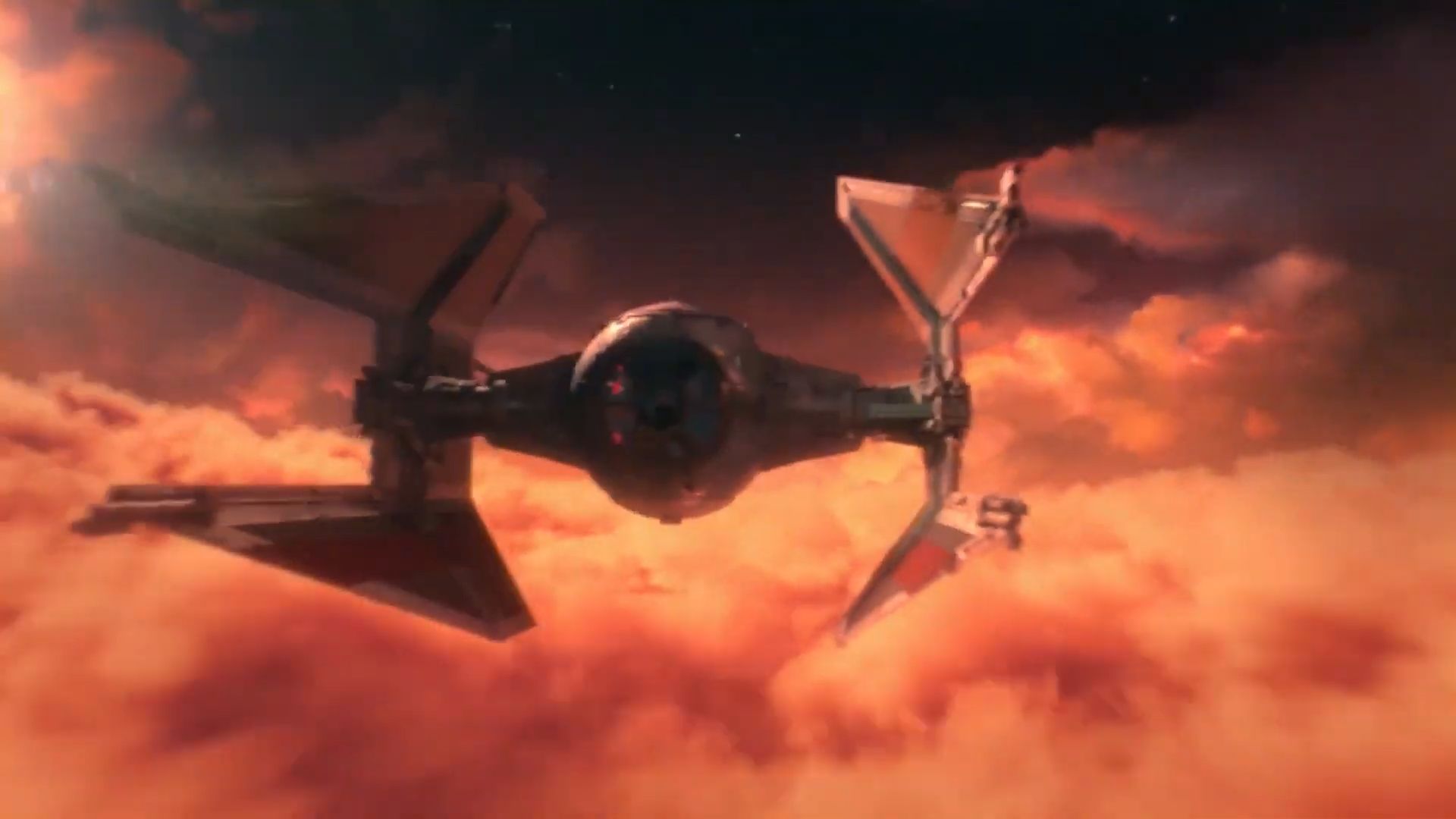
If EA Star Wars games had started to become known for their huge ambition, then Squadrons is a timely reminder of what a singular focus can bring to an experience. This wants to be nothing more than a great place to fly a starfighter. In its best moments, it achieves that goal, living up to some of the older classics that players fell in love with. While the single-player doesn't quite deliver anything more compelling than a chance to get used to the game's style, the multiplayer seems primed to offer up plenty for those who have been waiting for an experience like this for quite some time. If that's enough in the long run remains to be seen, but for now, I'm off to tinker with my Ion Cannons.

Ben Tyrer is a freelance games journalist with over ten years experience of writing about games. After graduating from Bournemouth University with a degree in multimedia journalism he's worked for Official PlayStation Magazine as a staff writer and games editor, as well as GamesRadar+ (hey, that's this website!) as a news editor. He's also contributed to Official Xbox Magazine, Edge, PC Gamer, GamesMaster, PC Games N, and more. His game of the year - no matter the year - is Rocket League.
